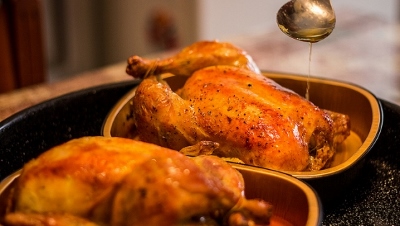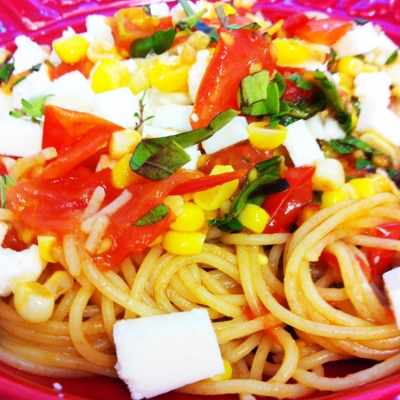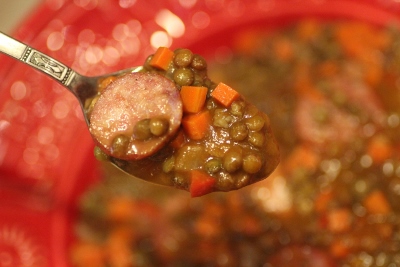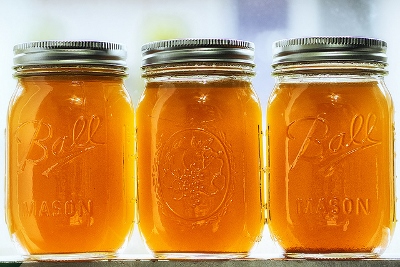Flickr/Marjan Lazarevski
Home cooks take a particular pride in knowing that their food is just a little bit better than everyone else’s. Once you’ve gotten down the basics and are able to throw in a few gourmet touches, it’s easy to get cocky and think that you know everything about making your favorite dishes. Even if you’re readying your MasterChef application and spend more time researching cooking techniques than anyone else you know, though, there are still probably a few things in the kitchen that you’re just not doing correctly.
Many times, the things you’re cooking wrong are just making your life more difficult, especially when the finished product is less than desirable. You’ve probably been making these seven dishes in your own kitchen for years, but there’s always room for improvement. Add these culinary swaps to your kitchen routine, and maybe you can perfect your bechamel sauce or learn how to roll your own sushi in all the time you’ve saved.
1. Bacon

Flickr/Didriks
Bacon is among the most delicious of all foods, but the cooking process is messy and often painful. Fortunately, you can avoid the popping grease and singed skin by simply switching to oven-cooked bacon. Preheat the oven to 425, line a cookie sheet or jelly roll pan with aluminum foil, and place an oven-safe cooling rack on top. Arrange the bacon in a single row, and bake until crispy. As a bonus, you’ll have perfectly flat bacon that will look beautiful in a club sandwich.
2. Scrambled Eggs

Flickr/Brian Sanders
When cooked properly, scrambled eggs are heaven in a skillet. When cooked poorly, though, this dish quickly turns into a rubbery mess. It’s difficult to keep scrambled eggs stirred in a skillet, but a double-boiler will turn out the perfect pan every time. Chef Daniel Boulud, an obvious expert in the field of perfectly-cooked food, slowly cooks his scrambled eggs over low heat for twenty minutes. You don’t have to go that slowly, but even five or ten minutes in a double-boiler is enough to turn cheap supermarket eggs into a pillowy and rich restaurant-quality breakfast.
3. Roasted Chicken

This dinner classic is easy enough to make, but the results are often underwhelming. Oven-roasted chicken can be bone-dry with floppy skin, which isn’t exactly appetizing. Giving your chicken a quick “dry brine” in the refrigerator the night before will help draw excess water from the skin, along with infusing flavor into all parts of the bird. The night before roasting, rub your chicken liberally with kosher salt and place into a bowl lined with paper towels. Stick it in the refrigerator uncovered overnight, then roast at 425 until juices run clear. The hours of drying in the fridge will transform your lackluster chicken into a perfectly prepared bird.
4. Pasta

Even if you think you’re giving your cavatappi and penne enough room, you’re still probably not. A one-pound box of pasta needs at least a gallon of water to cook properly, and crowding your noodles into a saucepot that is too small will cause it to stick together and cook unevenly. Check out restaurant supply stores for a 6 quart stock pot or larger if you often prepare bigger batches of pasta. You should also stay away from oiling the pasta water—it only makes your noodles gummy, and prevents even the heartiest sauces from sticking to the pasta.
5. Lentils

Samara Linnell
Lentils have been treated poorly in the past, but they’re still one of the easiest legumes to prepare on short notice. Most recipes call for boiling lentils or simmering at high temperatures, but low heat will keep them from becoming mushy and losing their shape. Stirring gently can also help lentils maintain their toothy texture, but if you prefer a firm lentil, you may want to consider shelling out a few extra bucks for French green lentils, or lentilles de Puy. These fancy lentils have a much firmer texture, and can stand up to being simmered in soups or dal.
6. Chicken Stock

Flickr/Juan-Calderon
Making your own chicken stock is a great way to elevate your cooking. It’s rich texture and intense flavor can’t be beat, but many homemade stocks are hit-or-miss. Chicken stock is one of those foods where the “slow and low” philosophy is extremely important, and you’re only doing yourself a disservice by rushing the process. The longer the stock is allowed to simmer, the more gelatin and flavor can be extracted from the bones. Keeping chicken stock boiling will make it cloudy, and clearer stocks tend to have better flavor. If you’re too impatient to allow stock to slowly boil on the stove for a day or two, switch over to this fool-proof slow-cooker method.
7. Quinoa

Flickr/Luis Tamayo
It seems like everyone is adding quinoa to their diet, thanks to its excellent nutrition profile and effusive praise from celebrities and health food junkies. Being relatively new to the U.S. market, quinoa is sort of an unknown quantity for many home chefs, which can lead to soggy, flavorless quinoa. Boiling quinoa in water is a popular route, but it generally doesn’t result in much flavor. Toasting quinoa seeds in oil and aromatics like onion and garlic can infuse flavor, and steaming it in two parts chicken or vegetable stock to one part dry quinoa will infuse your grains with a little savory boost.
Amy McCarthy is a writer and editor living in Dallas, Texas. She enjoys lipstick, cooking, and fighting with celebrities on Twitter.